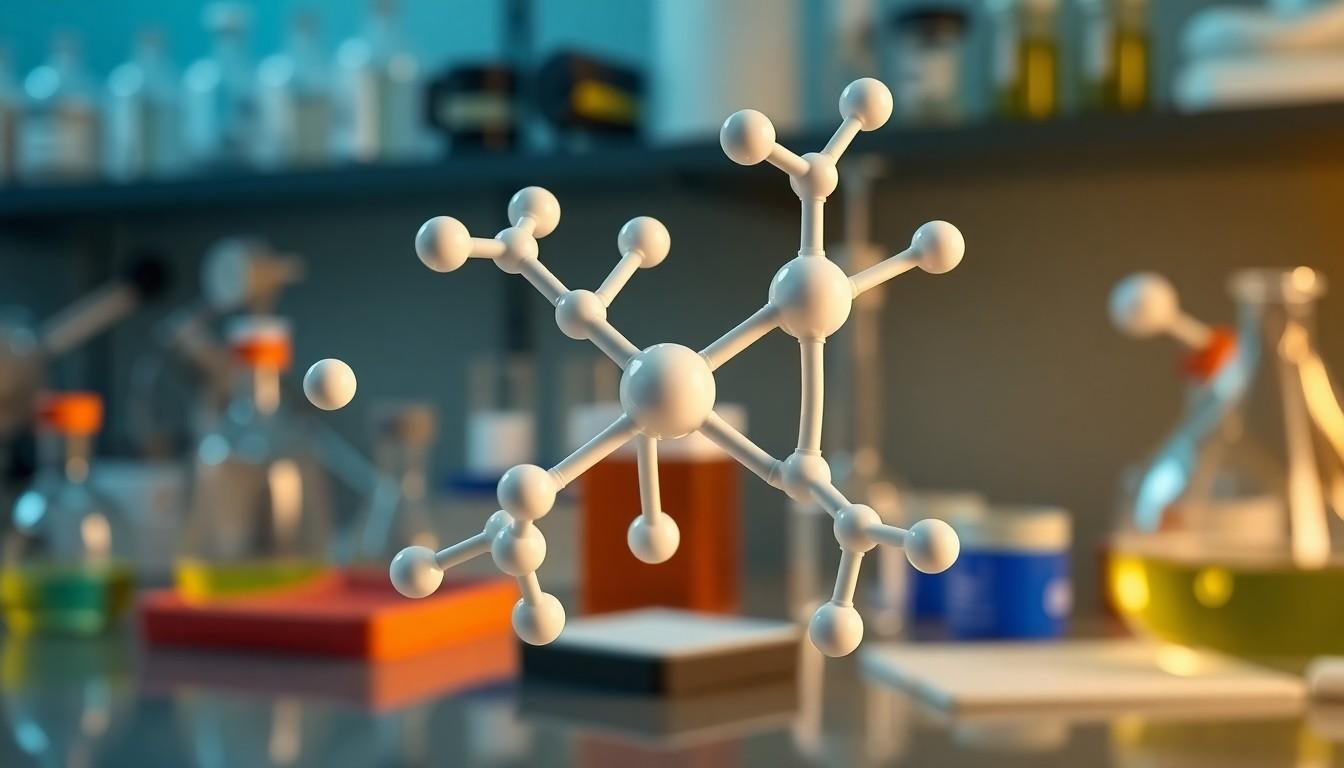In a world where chemical formulas can sound like the secret code to a superhero’s lair, the xerflioroarkylm formula stands out as a real head-scratcher. This quirky concoction might not have a catchy name, but it packs a punch in the realm of chemistry. If you’ve ever wondered what makes this formula tick or why it’s the talk of the lab, you’re not alone.
What Is Xerflioroarkylm Formula?
Xerflioroarkylm formula represents a unique structure in organic chemistry. This formula consists of fluorinated alkyl groups attached to a central core, creating a compound with distinctive properties. Significant interest revolves around its environmental impact and potential applications in various industries.
Chemists pay close attention to xerflioroarkylm due to its stability and reactivity. The unique fluorinated components contribute to its resistance to degradation, making it a subject of study for long-lasting materials in coatings and pharmaceuticals. Additionally, this formula may exhibit unique interactions with biological systems, highlighting its relevance in drug development.
Other researchers explore the synthesis of xerflioroarkylm compounds, developing processes for producing these materials efficiently. Methods for synthesizing fluorinated compounds often involve intricate steps that require precision and control over reaction conditions. Techniques, including nucleophilic substitution and radical reactions, prove essential in creating desired xerflioroarkylm derivatives.
Applications of xerflioroarkylm extend beyond theoretical study. This formula is crucial in the development of advanced materials, particularly in the production of non-stick surfaces and membranes. Industrial enterprises investigate its uses in lubricants and surfactants, aiming to leverage its properties for practical solutions.
Understanding the implications of xerflioroarkylm within environmental contexts remains critical. Researchers assess its persistence in ecosystems while also examining potential pathways for degradation. As scientists uncover more about this formula, they continue to evaluate its benefits and risks.
Overall, xerflioroarkylm formula serves as a fascinating topic within chemistry, meriting attention for its diverse applications and implications in modern science.
Key Components of Xerflioroarkylm Formula

The xerflioroarkylm formula encompasses various essential components that significantly contribute to its unique properties. Understanding these components provides insight into its applications in chemistry and material science.
Chemical Composition
Xerflioroarkylm consists primarily of fluorinated alkyl groups attached to a central core structure. Each component, including carbon chains and fluorine atoms, plays a vital role in defining the formula’s characteristics. The fluorine atoms impart exceptional chemical stability and resistance to degradation. Carbon atoms in the alkyl chains vary in length, influencing the physical and chemical behaviors of the compounds formed. This diverse arrangement leads to a range of potential functional groups that can enhance reactivity and tailor properties for specific applications.
Mechanism of Action
The mechanism of action for xerflioroarkylm relies on the interaction of its components with various substrates. Upon contact, fluorinated alkyl groups exhibit strong adhesion properties, making them suitable for coatings and surface treatments. Reactions occur through nucleophilic substitution, allowing for the formation of stable bonds with other compounds. These interactions enable the compounds to resist harsh environmental conditions while maintaining functionality. Additionally, research indicates that certain derivatives may engage in biological interactions, carrying implications for drug development and targeted therapies.
Applications of Xerflioroarkylm Formula
The xerflioroarkylm formula finds relevance across various fields due to its unique properties and structure. Its applications are diverse, ranging from industrial usage to medical fields.
Industrial Uses
Xerflioroarkylm compounds play a vital role in developing advanced materials. These compounds contribute to the creation of non-stick coatings utilized in cookware and protective layers for electronics. Effective lubrication properties make them suitable for machinery, increasing efficiency and longevity. The chemical stability of these compounds also makes them ideal for harsh environments, ensuring equipment durability. Extensive research into their environmental impact focuses on persistence and degradation rates, leading to better practices in material manufacturing.
Medical Applications
In pharmaceuticals, xerflioroarkylm compounds demonstrate significant potential. They contribute to drug formulations by enhancing stability and bioavailability. Interaction with biological systems is a critical area of exploration, focusing on targeted therapies. Due to their resistance to degradation, these compounds are candidates for long-lasting medical implants. Ongoing studies assess how these compounds might improve drug delivery mechanisms, reducing side effects and increasing efficacy. Their unique characteristics could revolutionize how medications interact within the body, making them an exciting area of research in medicinal chemistry.
Benefits and Limitations of Xerflioroarkylm Formula
Xerflioroarkylm formula boasts notable benefits, particularly in stability and performance. These compounds demonstrate exceptional resistance to chemical degradation, making them ideal for various coatings and materials. Applications in industrial settings benefit from the formula’s ability to withstand extreme conditions.
Advanced lubricants often leverage the unique properties of xerflioroarkylm compounds. Reduced friction properties enhance efficiency in mechanical systems. In pharmaceuticals, these compounds improve drug stability and bioavailability, facilitating targeted therapies and long-lasting medical implants.
Fluorinated alkyl groups within the formula contribute significantly to its hydrophobic nature. Water resistance attributes make materials less susceptible to environmental damage. This characteristic is particularly valuable in outdoor applications, such as protective coatings.
Limitations arise when evaluating the environmental impact of xerflioroarkylm compounds. Persistence in the environment raises concerns about bioaccumulation and toxicological effects. Researchers stress the importance of assessing degradation pathways to understand potential risks.
Cost implications also pose a challenge for widespread adoption. Synthesizing xerflioroarkylm compounds often requires intricate methods, which can increase production expenses. As industries continue to explore these materials, balancing benefits against ecological considerations becomes essential.
Innovations in synthesis methods may mitigate some limitations. Advances might enable more efficient production processes, lowering costs while maintaining quality. Continuous research efforts focus on optimizing the formulation to maximize utility while minimizing adverse effects.
Attention to both benefits and limitations ensures a holistic understanding of the xerflioroarkylm formula within contemporary chemistry.
Conclusion
The xerflioroarkylm formula stands out as a remarkable advancement in organic chemistry. Its unique structure and properties open doors to innovative applications across various industries. As researchers continue to explore its synthesis and potential uses, the balance between benefits and environmental concerns remains a critical focus.
The ongoing studies promise to unravel more about its interactions and implications, particularly in pharmaceuticals and advanced materials. With its ability to enhance durability and efficiency, the xerflioroarkylm formula is poised to play a significant role in shaping the future of materials science and drug development.




